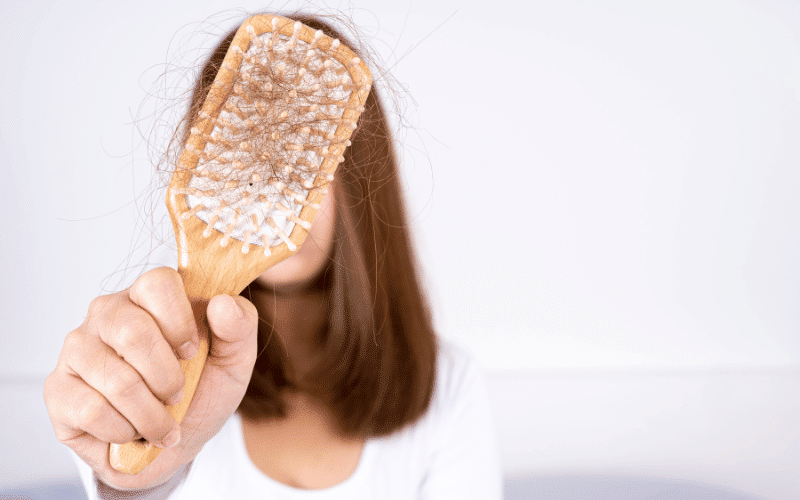8. Hair Loss and Dry Skin: The External Indicators of Iodine Deficiency

Turning our attention to more visible signs, iodine deficiency can result in hair loss and dry skin. While these symptoms might seem superficial compared to the others we’ve discussed, they serve as external indicators of the internal issue at play.
Let’s start with hair loss. The health and growth of our hair are tied closely to the thyroid hormones, which are, as we know, reliant on iodine. When these hormone levels dip due to an iodine shortage, it can disrupt the hair growth cycle, leading to hair loss. It’s not merely about losing a few extra strands while brushing. This hair loss can be significant, leading to visibly thinner hair or even bald patches.
Moving onto dry skin, it’s another external sign of iodine deficiency. Our skin continuously regenerates, shedding old cells to make way for new ones. However, without sufficient thyroid hormones, this process can slow down. The result? Skin that is dry, flaky, and rough to touch. While moisturizers might offer temporary relief, they don’t address the root issue — a lack of iodine.
But there’s more. Along with dry skin, you might also notice a change in skin color. Some individuals with iodine deficiency might develop a yellowish tinge to their skin. This discoloration is due to carotenaemia, a condition where there’s a high level of the pigment carotene in the blood. With iodine deficiency impeding the conversion of carotene into Vitamin A, the pigment instead deposits in the skin, leading to this yellowish hue. (8)